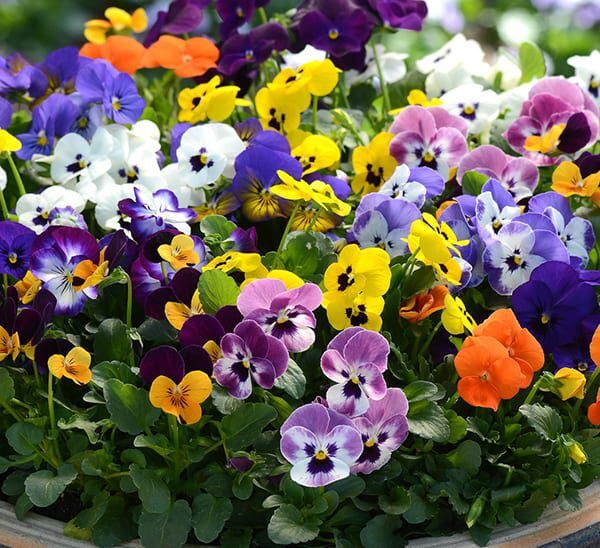Violas
Violas are a cousin of Pansies and feature an abundance of vibrant, delicate blooms throughout the cool season. Violas are a beautiful and versatile ornamental plant that can add a touch of elegance to any garden. With their delicate petals and bright colors, violas are sure to please even the most discerning gardener.
Mixed Colors Available.
Color may vary from images shown, depending on available store inventory.
Please contact your local store for product availability.
Find a garden center near you.
How to Care for Violas
Sunlight: Violas thrive in full sun to partial shade. They prefer at least six hours of sunlight per day for optimal growth and flowering.
Soil: Plant violas in well-drained soil that is rich in organic matter. A pH of 6.0 to 6.8 is ideal.
Water: Avoid watering your Violas from directly overhead, as this can leave moisture on the leaves for extended periods. Violas require consistent moisture, but avoid overwatering, as this can lead to root rot. Water deeply in the morning, allowing the soil to dry out slightly between waterings.
Fertilizer: Fertilize violas every four to six weeks with a balanced fertilizer. Avoid over-fertilizing, as this can cause leggy growth.
Deadheading: Deadhead spent flowers regularly to encourage continuous blooming and prevent self-seeding.
Pests and Diseases: Violas are susceptible to aphids, slugs, and snails. Monitor your plants regularly and take action to control pests. Avoid overhead watering, as this can promote fungal diseases.
Winter Hardiness: Violas are treated as annuals in Texas, though they thrive in the cooler seasons and bloom during the colder months. While they can withstand the cooler weather, they may require protection from harsh winter conditions, typically below 20 degrees. “
Species: Viola cornuta 'Sorbet'
Other Species Names: Sorbet Viola, Horned Violet
Plant Height: 6 in.
Spread: 12 in.
Evergreen: No
Plant Form: Mounding
Summer Foliage Color: Green
Minimum Sunlight: Full Sun
Maximum Sunlight: Full Sun
Violas are versatile ornamental plants that can be used in a variety of ways. They have both trailing or upright habit, making them ideal for borders, beds, containers, and hanging baskets.
Violas are versatile landscape plants with a long blooming season. They come in a wide range of colors and textures and can be used in a variety of ways, such as in borders and beds, containers and hanging baskets, as groundcovers, and in rock gardens.
Violas are cool-season flowers that are relatively easy to care for. They prefer well-drained soil with a pH of 6.0-7.0 and full sun or partial shade. Plant them in the spring or fall and space them 6-12 inches apart. Water regularly and fertilize them every few weeks. Deadhead Viola flowers regularly to encourage continued blooming.
